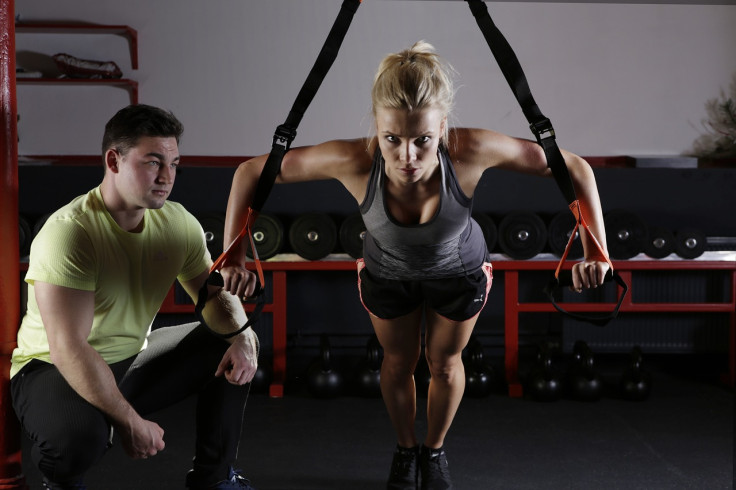12 Most Effective Exercises For Weight Loss In 2024
Fitness plays a crucial role in one's well-being. Those who are fit are the ones who enjoy life the most. While some people actually desire to become fit, most of the time, they encounter challenges that often dissuades them from engaging in activities that will help get them into shape. One of these challenges is weight loss.
Fortunately, there are a number of exercises that you can do, which could help you lose those extra pounds. Here are the 12 best exercises for weight loss, and one of them might just be the solution that you are looking for.
1. Walking
Walking is considered as one of the most effective exercises for weight loss. It is a low-impact aerobic exercise that can contribute to weight loss through several mechanisms. It is considered as the most ancient exercise but at the same time, the best modern medicine.
Walking, especially at a brisk pace, increases your heart rate and burns calories. The more calories you burn, the greater the potential for weight loss. The actual number of calories burned depends on factors like your weight, walking speed, and duration.
It also targets fat as a source of energy, especially during low to moderate-intensity activities. This makes it an effective exercise for burning stored fat.
By regularly walking, one can boost his or her metabolism. While the impact may not be as significant as high-intensity exercises, the cumulative effect of increased activity can contribute to a higher basal metabolic rate (BMR).
In addition, walking, can influence appetite hormones. Some studies suggest that moderate-intensity exercise may help regulate appetite, potentially reducing overall calorie intake.
Aside from all these, walking can have stress-reducing effects, and stress management is important for weight loss. High stress levels can lead to overeating or choosing unhealthy foods.
2. Jogging or Running
Jogging is an effective form of cardiovascular exercise that can contribute to weight loss through various means.
It promotes calorie-burning activity that helps create a calorie deficit, which is essential for weight loss. The more intense the jogging, the more calories you are likely to burn. The number of calories burned depends on factors like your weight, jogging speed, and duration of the activity.
Jogging or running, also elevates the heart rate and increases oxygen consumption. This leads to a higher rate of calorie expenditure during and after the activity. Like other exercises, it also targets body fat as you engage in the activity. When jogging, you are able to utilize stored fat for fuel, which contributes to fat loss over time.
Jogging regularly contributes to an increase in your basal metabolic rate (BMR). This means your body continues to burn calories at an elevated rate even when you are at rest. What's more, after a jogging session, your body continues to consume oxygen at an elevated rate during the recovery period. This post-exercise energy expenditure, known as EPOC, contributes to additional calorie burning.
3. Cycling
Cycling is a versatile and effective form of exercise that can contribute to weight loss. It is a cardiovascular exercise that burns calories, which could help you lose lose those extra pounds. The number of calories burned depends on factors such as cycling speed, intensity, and duration.
This can be considered as a high-intensity cardiovascular exercise, depending on the intensity of the ride. This elevates your heart rate, increases oxygen consumption, and results in a higher rate of calorie expenditure.
Like jogging or running, cycling zeroes in on body fat. Engaging in cycling can help the body utilize stored fat for fuel, contributing to fat loss over time.
In addition, cycling engages various muscle groups, especially in the lower body (quadriceps, hamstrings, and glutes). This not only burns calories during the activity but also contributes to muscle toning and development.
4. Swimming
Swimming is a full-body workout, and considered to be one of those really effective exercises for weight loss. It has been proven burn calories, engage muscle groups, and give you a leaner physique.
The number of calories that one burns when swimming depends on factors such as the intensity, stroke choice, and duration. Among the styles, freestyle swimming tends to burn a significant amount of calories.
It also engages multiple muscle groups simultaneously, including the core, legs, arms, and back. This full-body workout leads to a higher calorie expenditure compared to exercises that focus on specific muscle groups.
Since this is a low-impact exercise, it is highly suitable for people with joint issues or those who need a break from high-impact activities. The low impact allows for longer and more consistent exercise sessions, promoting weight loss over time.
Like other forms of cardiovascular exercise, swimming also boosts your metabolism. Regular swimming sessions contribute to an increase in your basal metabolic rate (BMR), meaning your body continues to burn calories at an elevated rate even when you are at rest.
5. Jumping Rope
Jumping rope, also known as skipping, is a highly effective and efficient exercise for weight loss. It effectively burns a significant number of calories. The intensity of the activity, along with the rapid and repetitive movements, leads to a high calorie expenditure.
In fact, it is often incorporated into high-intensity interval training (HIIT) routines. HIIT alternates between short bursts of intense activity (jumping rope) and periods of rest or lower-intensity activity. This can boost calorie burning and improve overall fitness.
Jumping rope engages multiple muscle groups, including the legs, core, arms, and shoulders. This full-body workout contributes to increased energy expenditure and muscle toning.
The fast-paced nature of jumping rope elevates your heart rate, leading to improved cardiovascular health. A higher heart rate increases the number of calories burned during and after the exercise.
6. Weight Training
Weight training, also known as resistance training or strength training, can be an effective component of a weight loss program. Here's how weight training promotes weight loss:
Building and maintaining muscle through weight training increases your resting metabolic rate (RMR). Muscle tissue requires more energy at rest than fat tissue, so having more lean muscle mass means your body burns more calories even when you're not actively exercising.
During the actual exercise session, weight training burns calories. While the calorie burn may not be as high as with some cardiovascular exercises, the afterburn effect (excess post-exercise oxygen consumption or EPOC) can lead to continued calorie burning post-workout.
While cardio exercises predominantly burn calories during the activity, weight training contributes to fat loss by promoting muscle development. This can lead to a reduction in overall body fat percentage, even if the scale may not show a significant decrease in total weight.
7. Circuit Training
Circuit training is a form of high-intensity exercise that involves moving through a series of different exercises with minimal rest between them. This type of workout can be effective for promoting weight loss.
Circuit training is designed to keep the heart rate elevated throughout the workout. This sustained cardiovascular activity leads to increased calorie expenditure, helping to create a calorie deficit, which is essential for weight loss.
Many circuit training routines incorporate elements of HIIT. High-intensity intervals followed by short rest periods can boost metabolism and increase the afterburn effect, resulting in continued calorie burning after the workout is completed.
Circuit training typically involves a mix of resistance or strength exercises and cardiovascular exercises. This combination helps burn calories, improve cardiovascular fitness, and build lean muscle mass, contributing to overall weight loss.
Circuit training engages various muscle groups throughout the workout, promoting muscle development and toning. Building lean muscle mass contributes to an increase in resting metabolic rate (RMR), which means more calories burned at rest.
8. Yoga
Yoga can contribute to weight loss and overall well-being through various physical, mental, and lifestyle benefits. While it may not be as intense in terms of calorie burning as some other forms of exercise, the holistic approach of yoga can support weight loss in several ways.
For one, yoga encourages mindfulness, and this awareness can extend to eating habits. Practicing mindfulness during meals may lead to better food choices and reduced overeating.
It also reduces stress. Studies have shown that chronic stress is linked to weight gain and the difficulty to lose weight. Through relaxation techniques, such as deep breathing and meditation, one will be able to manage stress and prevent emotional eating.
Aside from reducing stress, it has been shown to positively impact hormonal balance, including the regulation of stress hormones like cortisol. Balancing hormones can contribute to weight management.
Regular yoga practice is associated with improved sleep quality. Quality sleep is crucial for weight loss and overall health, as it influences hormones that regulate appetite and metabolism. With all the benefits of yoga, no wonder it is considered as one of the most effective exercises for weight loss in the year 2024.
9. Pilates
Pilates is a form of exercise that focuses on strengthening the core muscles, improving flexibility, and enhancing overall body awareness. While it may not be as high-intensity as some other forms of exercise, Pilates can still effectively contribute to weight loss.
Pilates involves controlled, precise movements that target specific muscle groups, particularly the core, but also the arms, legs, and back. Building and toning muscles can increase calorie expenditure and contribute to weight loss.
It can help increase lean muscle mass, which is metabolically active tissue. More muscle mass leads to a higher resting metabolic rate (RMR), meaning the body burns more calories at rest.
While Pilates may not burn as many calories as high-intensity cardio exercises, it still provides a moderate workout that contributes to calorie burning. The exact number of calories burned depends on factors such as the intensity of the session and the individual's weight.
This also leads to improved posture, which can lead to better movement patterns, making it easier to engage in other physical activities and maintain an active lifestyle, which is crucial for weight management.
10. High-Intensity Interval Training
High-Intensity Interval Training (HIIT) is a popular and one of the most effective exercises for weight loss that involves short bursts of intense exercise followed by brief periods of rest or lower-intensity activity. HIIT can promote weight loss through various means.
HIIT is known for its ability to burn a significant number of calories in a relatively short amount of time. The intense bursts of activity increase energy expenditure during the workout, contributing to a calorie deficit, which is essential for weight loss.
It can also lead to an elevated metabolic rate after the workout, known as the afterburn effect. During this period, the body continues to burn calories as it works to restore oxygen levels and repair muscle tissue, contributing to additional calorie expenditure.
Regular participation in HIIT can lead to an increase in resting metabolic rate. Building lean muscle mass, which is often associated with HIIT, results in a higher basal metabolic rate (BMR), meaning the body burns more calories at rest.
HIIT has been shown to be effective in promoting fat loss, especially abdominal fat. The high-intensity intervals create a metabolic environment that encourages the utilization of stored fat as a source of energy.
In addition, it helps in preserving lean muscle mass while promoting fat loss. This is important for maintaining overall strength and preventing a decrease in resting metabolic rate during weight loss.
11. Hiking
Hiking is an enjoyable outdoor activity that is among the effective exercises for weight loss in 2024. It is considered as a form of cardiovascular exercise that burns calories. The intensity of the activity, terrain, and duration of the hike will determine the number of calories burned. Uphill and uneven terrain generally require more effort, leading to increased calorie expenditure.
Hiking naturally involves variability in intensity, especially when navigating inclines and declines. This fluctuation in intensity can be similar to interval training, which is known to enhance calorie burning and promote weight loss.
Depending on the terrain and pace, hiking can elevate your heart rate into the cardiovascular training zone. This is beneficial for cardiovascular health and contributes to calorie burning.
Hiking engages various muscle groups, including the legs, glutes, core, and even the upper body when using trekking poles. The constant change in terrain and elevation requires different muscle actions, promoting overall muscle engagement and toning.
12. Kickboxing
Kickboxing is a high-energy, full-body workout that involves rapid and dynamic movements. This leads to a significant calorie burn during the session, helping to create a calorie deficit necessary for weight loss.
Many kickboxing workouts incorporate the principles of high-intensity interval training (HIIT). When you alternate between intense bursts of activity and short rest periods, you can boost metabolism, increase calorie burning, and promote fat loss.
It is one of the most effective exercises for weight loss that improves heart and lung health. Enhanced cardiovascular fitness allows for more efficient oxygen delivery to muscles, improving overall endurance and stamina.
Kickboxing engages multiple muscle groups simultaneously, including the legs, core, arms, and shoulders. This full-body engagement increases energy expenditure and contributes to muscle toning.
The explosive movements in kickboxing can lead to muscle development and toning. Building lean muscle mass is essential for increasing resting metabolic rate (RMR), which means your body burns more calories at rest.
Happy Weight Loss Journey
There are absolutely many ways to lose weight and the abovementioned ones are among the effective exercises for weight loss. Just choose from any of these exercises, start early, and see how your body will start losing the extra pounds.
© Copyright IBTimes 2025. All rights reserved.



































